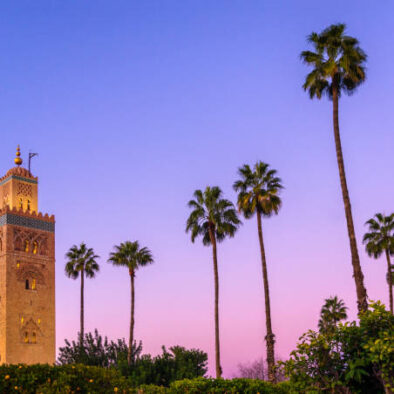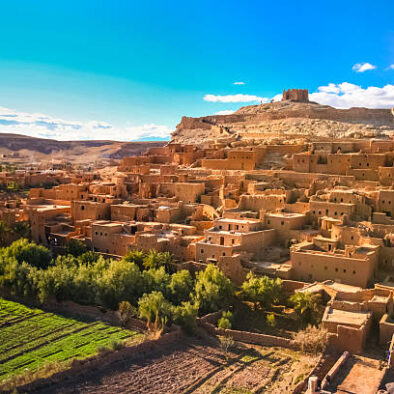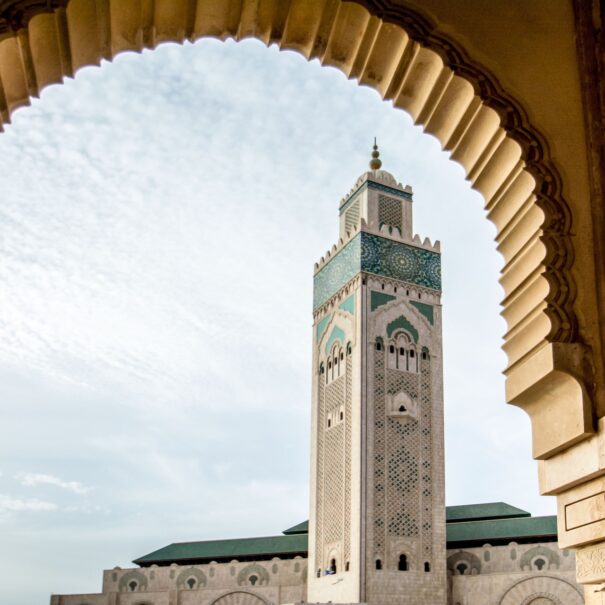Are you wondering what to eat in Morocco? Are you always lost about what to choose from the menu? Our Morocco travel blogs have the best Moroccan cuisine and culture throughout the country, which you will love to try while visiting Morocco.
How to make a tagine with our Moroccan cuisine culture:
Tagine is one of the most common Moroccan cuisine cultures, and pretty much every restaurant you visit has some variation of it. The name comes from the dish it’s cooked in. It’s either meat or fish cooked with vegetables and spices. Most dishes have at least turmeric in them. Also, of course, you can skip the meat and fish and just get vegetable tagine! However, you can still see a lot of different Moroccan foods, but tagine is the most common and famous one.
With our tours in Morocco, you will get to know how to prepare a tagine:
Heat some olive oil in a big pot or tagine over medium heat. Add the chopped garlic and onion, and sauté until they become soft and translucent.
Brown the cubed meat on all sides after adding it to the pot.
Add the cinnamon, ginger, paprika, coriander, ground cumin, salt, and pepper to the pot. To thoroughly coat the meat with the seasonings, stir.
Pour the broth and diced tomatoes into the pot. After bringing it to a simmer, turn down the heat. Once the beef is cooked, cover and simmer for approximately one hour.
Add the almonds and dried apricots to the pot. Once the apricots are tender, give it another 15 to 20 minutes of simmering, stirring frequently. If necessary, taste and adjust the seasoning. Garnish the tagine with chopped parsley and serve hot.
With Moroccan cuisine culture, you will taste couscous:
Couscous is a traditional North African cuisine in Arabic romanized as “kuskus” that consists of small steamed granules of rolled semolina, often served with a stew on top. Other regions also use similar methods to cook pearl millet, sorghum, bulgur, and other grains, and the resulting dishes are also sometimes referred to as couscous. Mostly served during occasions in Moroccan culture and Berbers. very often on Friday because of the holy day that Muslims have.
Couscous is a mainstay of Moroccan cuisine culture in Algeria, Tunisia, Mauritania, and Libya. Through the French colonial empire and the Pieds-Noirs in Algeria, it was incorporated into French and European cuisine around the beginning of the 20th century.
With our Moroccan cuisine culture, our tours in Morocco will teach you how to cook couscous.
How to cook couscous at home? What to Eat in Morocco:
- Fill a pot with water or broth.
- Season with a pinch of kosher salt and a drizzle of extra virgin olive oil.
- Bring it to the boil.
Now toast the couscous. - Heat 1 to 2 tablespoons of extra virgin olive oil in a nonstick pan.
- Use a wooden spoon to stir the couscous until it turns golden brown.
- Although optional, this step can significantly enhance the nutty flavor.
Quickly stir the couscous into the boiling liquid and then quickly turn off the heat. - Cover and leave for 10 minutes or until the water or broth is completely absorbed by the couscous.
Uncover with a fork and whisk.
Moroccan cuisine culture will teach you How to Make Harira (Soup):
Harira is an ancient Moroccan cuisine of chickpea and tomato soup. Often appears on lists of must-try Moroccan dishes because of its wonderful aroma and strong spice. Not to mention that you can order a Moroccan Harira in every restaurant in the whole country; it is common for Moroccans to drink Harira for dinner and sometimes during breakfast.
The word “Harira,” which comes from the Berber word for “Tahrirt,” refers to the consistency of the soup, using either eggs or a “Tedouira,” which is a mixture of flour and water. Although Harira is made all year round, it is a common dish during Ramadan, which is very practiced to break the fast after the time has arrived.
What ingredients do I need to make Harira?
With our Moroccan cuisine culture, you can be a chef at home. Below are some tips on how to make soup:
- Put the oil over medium heat and brown the meat in a 6-liter or larger pot or pressure cooker.
- Add 710 ml of water, soup bones, peeled chickpeas, pureed tomatoes, shredded onion, spices, and smen (if using). Bring to the boil, cover, and simmer for 50-60 minutes or 25 minutes under medium pressure.
Stir in the chopped herbs, lentils, tomato paste, and 8.5 cups (2 liters) of water. - Cover and bring to a boil.
If you want to add rice, cook the soup for 30 minutes under medium pressure (or 60 minutes simmering); then add the rice and cook for another 15 minutes under pressure (or 30 minutes simmering).
Otherwise, pressure cook the soup for 45 minutes (or simmer for 90 minutes) before adding the broken vermicelli. - The vermicelli should be soft after a few more minutes of cooking.
Adjust the spices by tasting them. Gradually add the “Tedouira” (a mixture of flour and water) to the soup, stirring constantly to ensure it is thoroughly incorporated until the soup has a smooth, cream-like consistency. Use just enough to achieve the desired thickness of the soup.
Omlete Berber or eggs for breakfast:
The Moroccan Berber omelette, or Shakshuka, is an important part of Moroccan cuisine and comes from the North African deserts. Often cooked in a cast iron pan or tagine, this omelette has a thick sauce consisting of tomatoes, onions, and a mixture of flavorful spices. The sauce is then covered with lightly beaten eggs, which are cooked until set and often topped with olives and fresh herbs. As well as providing an explosion of flavor, this dish provides an insight into the culinary customs of the Berbers.
Trying Bread or Khobz with Our Moroccan Cuisine Culture:
Khobz is one of the favorites out of all the breads that you can eat in Morocco, and there are a lot of them. It’s a round, flat bread that you can find everywhere. Almost every restaurant serves it, and you can notice that regular stalls simply have piles of it on display.
According to our Moroccan cuisine culture, each family’s khobz was slightly different in the past because a village had a baker, and everyone brought their dough to him to be baked. The baker could somehow keep track of who was who!
French Moroccan food:
With our Morocco travel blog,Moroccan cuisine culture, in general, is defined by its use of spices like cumin, coriander, cinnamon, saffron, and paprika, as well as a range of vegetables, meats, and cereals. French Morccan food is a delightful combination of flavors, ingredients, and cooking techniques from both cultures.
What not to eat in Morocco?
To guarantee a safe and pleasurable gastronomic experience, it is advisable to exercise caution when consuming specific food while in Morocco and what not to eat in Morocco. First of all, stay away from eating street food that doesn’t look clean or isn’t freshly made because it might cause foodborne infections. Even though classic meals like tagine and couscous are a must-try, seafood in coastal areas should be handled carefully because freshness can vary dramatically, especially if it comes from unreliable vendors. Additionally, avoid eating raw vegetables or salads that may not have been cleaned with clean water because they may contain dangerous bacteria. Last but not least, avoid drinking tap water. If you want to stay hydrated without endangering your health, you should only drink bottled water.


































Leave a Reply